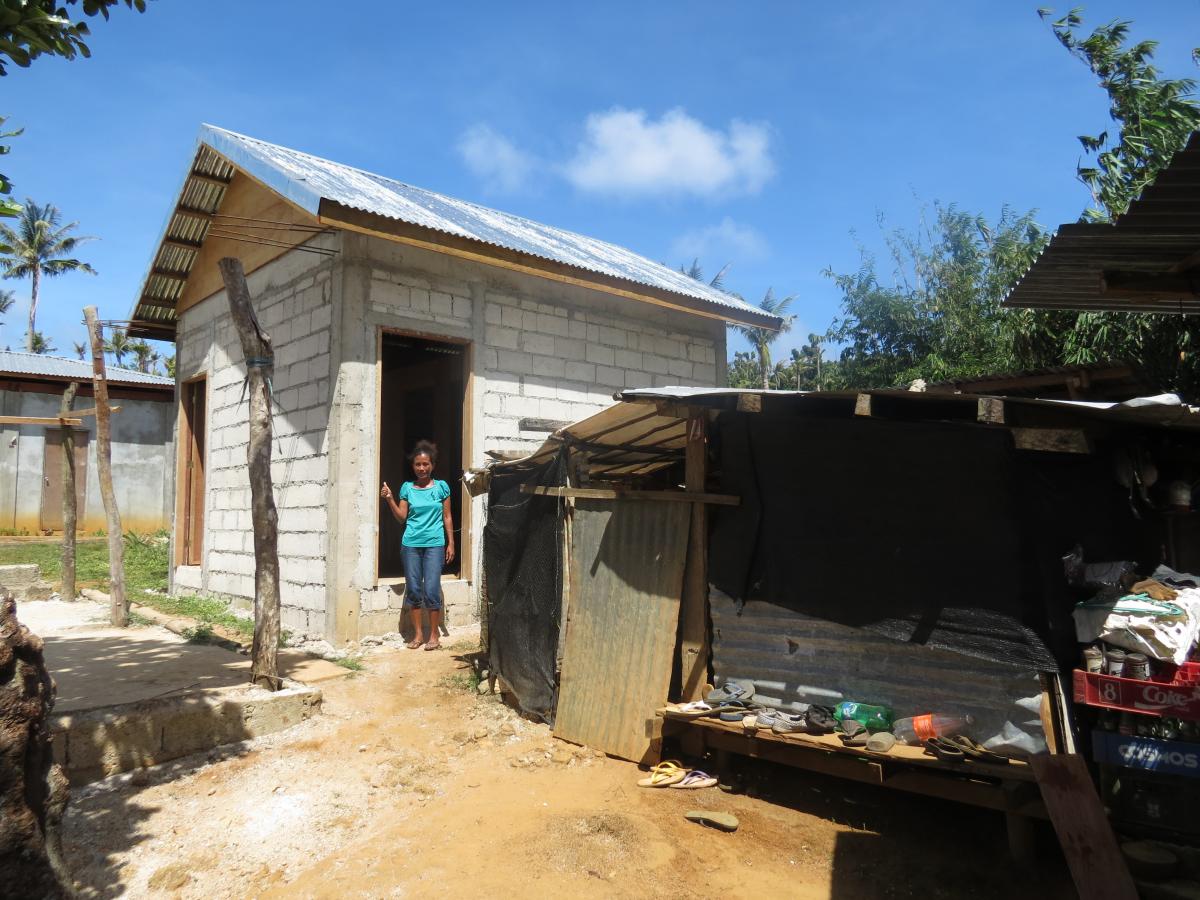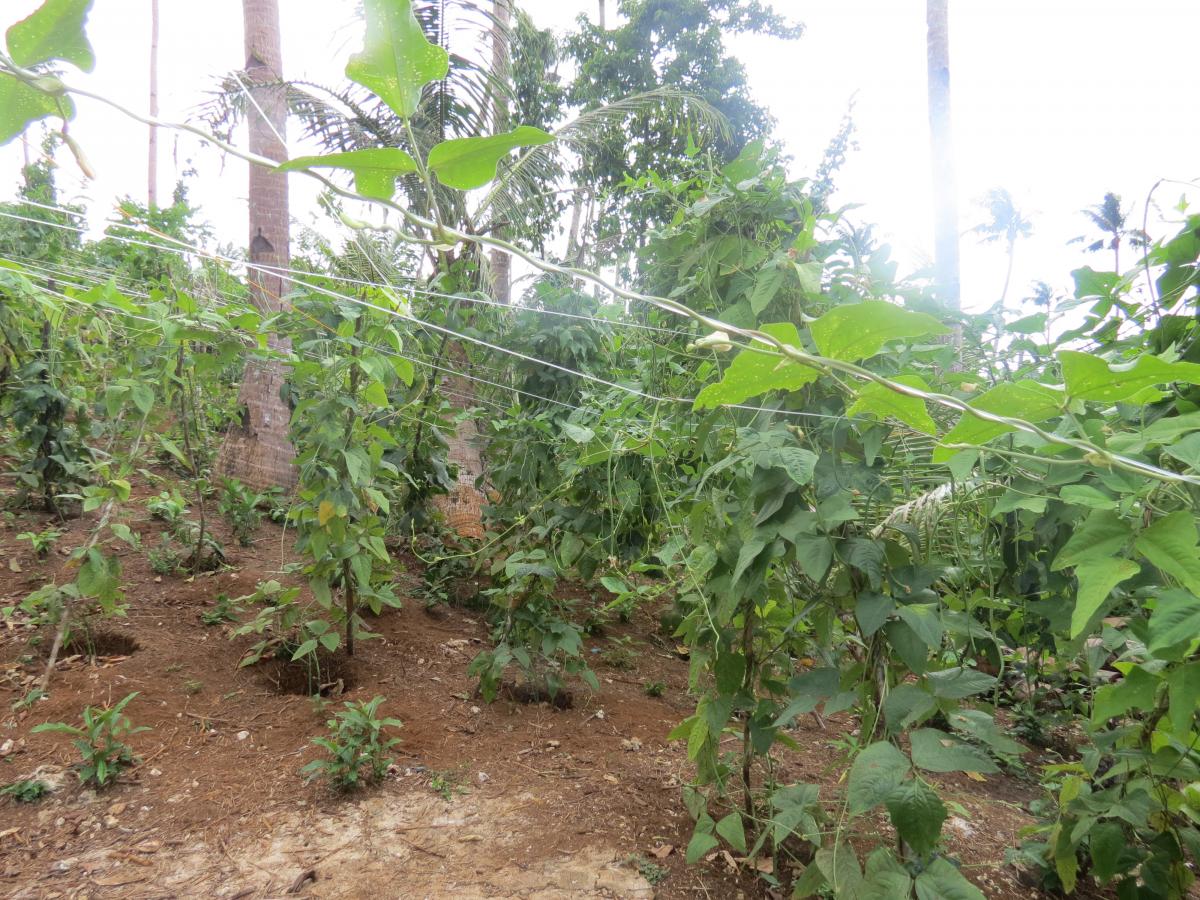(PHILIPPINES) Coming back for the November 8th one year anniversary of typhoon Yolanda is a mixed bag of emotions. While I am happy to see transformation, I try not to feel the weight of how much there is still to do.

Housing causes similar worries. There have been a lot of tents and shelters kits provided by many non-profit organizations, but they are not strong enough to withstand the next typhoon. People are wondering how long they will be living in these tents. Other families received no shelter assistance at all and are still living in makeshift shelters.
At the community level, there are several large buildings that remain unrepaired. They stand as a monument to the devastation of Haiyan. Community day care centers and town halls continue to be in need of attention, and there is open defecation in the streets as well as broken water pumps. People wonder what they can do about safe water and preventing disease.
On top of all of this, there is also frustration that comes from seeing progress and prosperity in nearby communities, yet it is out of reach for some.

With so much still to do, disaster survivors can easily get discouraged on top of the trauma that they have already experienced. World Renew understands their frustration and is working to help them get back on their feet as soon as possible. We also know that while disaster response takes money, it also takes time to do things well.
At the 12 month stage, we have finished designing, building prototypes and started the reconstruction of 200 plus permanent shelters. I am proud of the fact that World Renew’s houses are so strong.
In Eastern Visayas, where the typhoons first come ashore from the Pacific, we build houses to be resistant to 250km/hour winds. In Western Visayas, we build them to 200km/hour resistance as the winds dissipate somewhat as they move westward.
On the top right is a photo of woman in the barangay of Hagna, Guiuan who very happily moved from the makeshift shelter she was living in (in the right of the photo) into her new, safe World Renew house where she will live with her four children.

I was glad on this trip to see that World Renew’s livelihoods projects are also doing well. I feel like the sweat and tears are all worth it when I see some of the projects netting results already. The string beans that were planted in between the destroyed coconut trees are now yielding a crop. We planted 1,000 square metres of beans for a group of nine members. Each can harvest 5 kgs three times per year. Though this only nets $57.00 per person, it is one of the ways that contributes to their income.
The hollow concrete block business World Renew helped to start has already managed to save 30,000 pesos (about $775) in their group savings account. I also attended a community meeting for four groups of small businesses we will be restoring.
Through this initiative people will be able to earn a living by making crafts out of shells, weaving mats, running a barbershop, or operating a bicycle taxi.
Fishing families are also seeing progress. I attended a focus group discussion with 22 fisherfolk in Barangay 89 in Tacloban who have started fishing again with World Renew’s assistance. What I found interesting is that they are not catching as many fish as before Yolanda because the typhoon destroyed some of the coral. There is a lot of debris also in the water affecting the breeding ground or where fish used to lay their eggs. They told me that it will take two years for the corals to reform by themselves.
Nevertheless, they are catching 2-3 kgs of fish at a time and can sell it for 120 pesos per kg. This means that they can earn $5 – $8 per catch. They are thankful and said they have hope again.
There is much to do, and I will be busy coming over every two to three months to plan the next programs like latrines and potable water and to monitor ongoing reconstruction and psychosocial programs. We have covered many strides but there is a ways to go. Please pray that our staff of 75 or more do not get burnt out.
Thank you for your continued prayer for and support of people affected by Typhoon Haiyan!
Blessings,
Grace Wiebe
Senior Project Manager
World Renew International Disaster Response
*Image Above: The smiling children at the top of the page are kids who will benefit from the new Daycare building in Camote.
